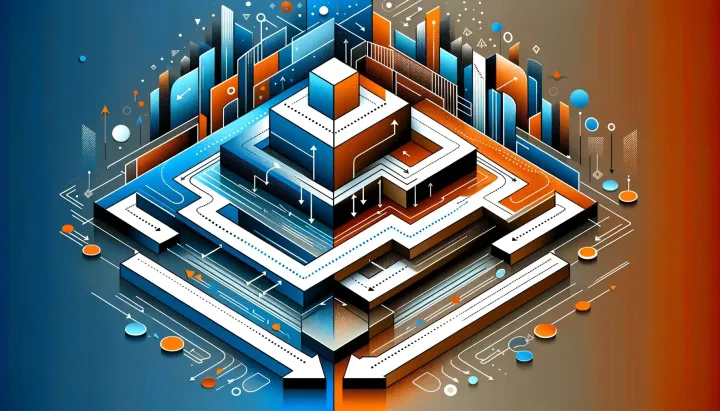Understanding the Chain of Command in Business
Let's take a look at the ins and outs of the chain of command in business and weigh up the pros and cons before implementing a rigid hierarchy.
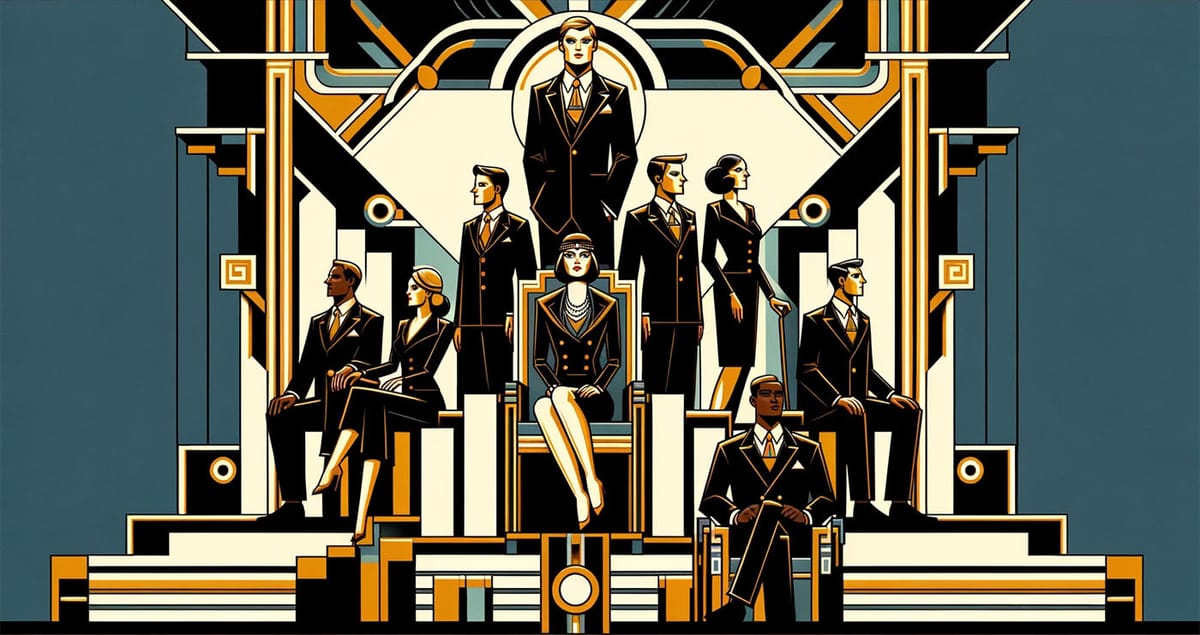
A chain of command is a hierarchical structure in an organization that establishes clear reporting relationships and authority, ensuring that information flows smoothly from top management to employees. In this piece, we discuss the importance of the chain of command in business, outlining its role in decision-making, delegation, and communication.
If you’ve ever worked in a corporate environment then you know how important it is to understand the chain of command.
The chain of command is a structure that dictates how decisions are made, who is in charge, and which tasks need to be completed. It's an essential component of any large business or organization because it allows everyone to stay informed and organized.
A chain of command also helps prevent any confusion that might arise when multiple people are trying to make decisions about the same topic.
Let's take a look at the ins-and-outs of the chain of command structure and why it matters.
What is Chain of Command in Business?
A corporate chain of command is a hierarchy that outlines who reports to whom, as well as the roles each person has within the organization.
It's important because it allows everyone to know their place within the organization and who they should go to with questions or concerns.
The corporate chain of command can be broken down into several different levels, starting with the most senior executives at the top and ending with entry-level employees at the bottom. In-between those two extremes, there are various departments such as sales, marketing, human resources, finance, etc., each with its own set of roles and responsibilities.
Why Does Chain of Command in Business Matter?
It's all about roles and responsibilities.
One of the most important reasons an organization should establish a chain of command is to ensure that employees have a clear understanding of who reports to whom.
This helps keep an organization running smoothly by ensuring that everyone knows where they fit in the company, and what their responsibilities are in relation to their own team and the company as a whole.
Without a clear chain of command, misunderstandings and conflicts are far more more likely to occur due to overlapping roles and responsibilities between team members, so it's important that every business considers this when planning their organizational structure and reporting lines.
When done right, a well-designed chain of command can help create better communication channels for everyone involved, since every employee understands who makes up their team — from senior executives all the way down to more junior team members — and what their responsibilities are.
The Chain of Command: Is It Helping or Hurting Your Business?
A chain of command is a fundamental part of any business. It establishes a clear hierarchy for making decisions, delegating tasks, and communicating within an organization. However, chains of command come with both advantages and potential pitfalls. As a business leader, it’s crucial you understand both sides before deciding if a chain of command aligns with your company’s needs and culture.
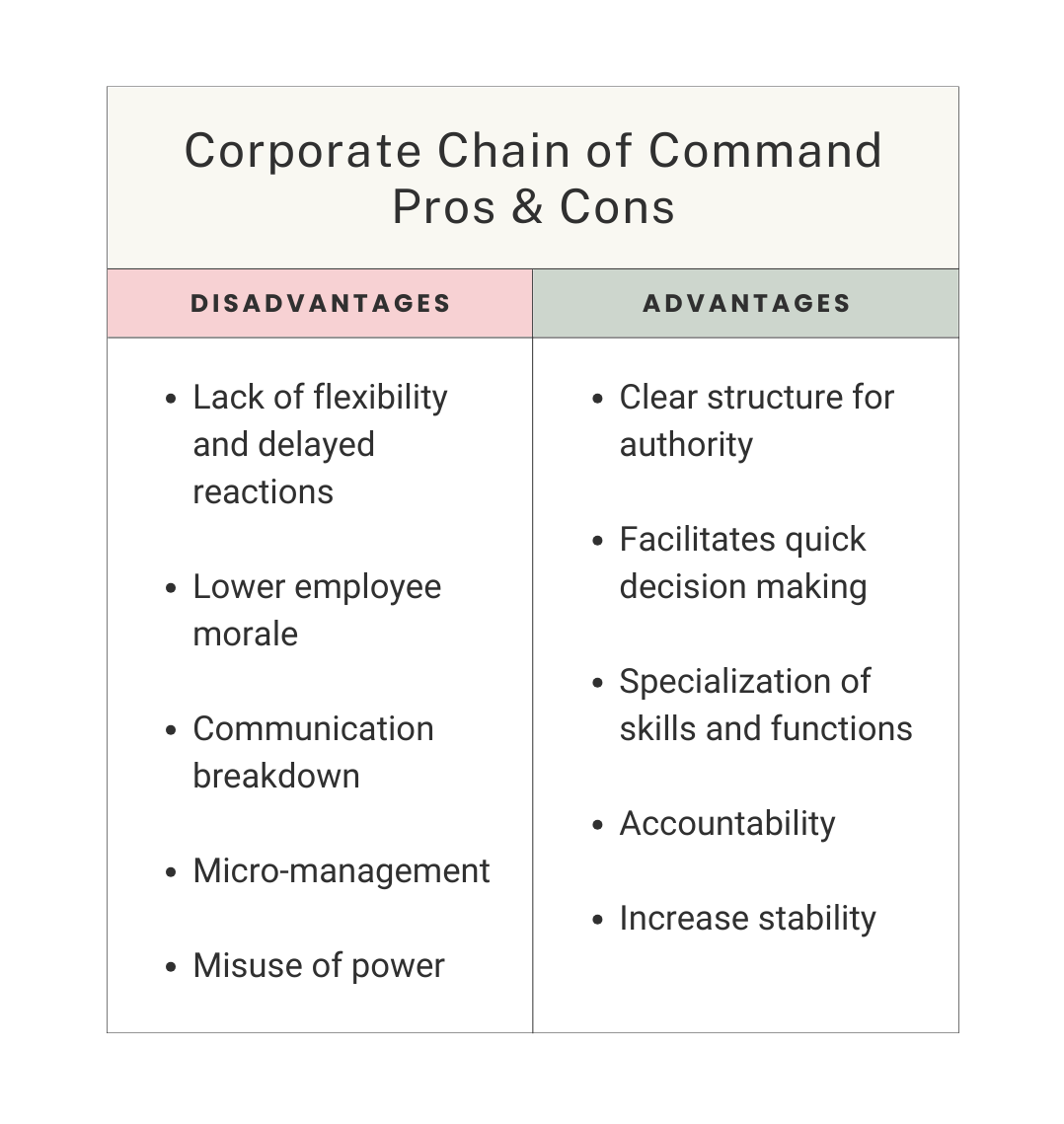
The Advantages of Establishing a Chain of Command in Your Business
Establishing a corporate chain of command within your company has several advantages.
Eliminates Confusion
Having a clear chain of command helps to eliminate confusion in the workplace. When everyone knows who they report to and what their responsibilities are, they are able to focus on their own job and can take ownership of their responsibilities.
Increases Accountability
With a clear chain of command, everyone knows who they are accountable to if their work isn’t done properly or if they don't meet the expectations of their role.
Prevents Disputes
Having a well-defined chain of command can help prevent disputes between team members and other departments within the organization. When everyone understands their position within the corporate hierarchy and how their role fits into the overall organizational structure, it's much easier for disagreements or misunderstandings to be resolved quickly and with minimal disruption.
Improves Decision-Making
Having a clearly established chain of command helps with decision-making and problem-solving within an organization. When everyone knows who is responsible for the different areas of your business, there is less confusion over who should make a particular decision or take responsibility for specific tasks. A well-designed chain of command in your business ensures that decisions can be made quickly and efficiently, and prevents certain types of miscommunication from occurring.
For example, an entry-level employee wouldn’t decide on a new tech stack. That falls on the CTO. The front-line sales rep, however, can decide the right discount to offer a longtime client to close a deal.
The Disadvantages of Establishing a Chain of Command in Business
Unfortunately, with the good comes the bad, and there are some pitfalls and potential drawbacks to having a rigid management structure.
Let’s take a closer look at some of these disadvantages.
Lack of Flexibility
If a chain of command structure is too rigid it can reduce flexibility and make it difficult for people to make decisions quickly. For example, if certain decisions require approval from several levels up in the chain of command, decision-making may be slowed down significantly.
If you're a business that needs to be more agile, you might consider loosening up your chain of command — perhaps with fewer "levels" in your hierarchy — so that decisions don’t need to go through multiple layers of management before they can be implemented.
Communication Issues
"Too many cooks spoil the broth."
When too many people are involved in decision-making, communication issues are more likely to arise. When everyone is included in every conversation, messages get lost, intentions get misunderstood, and people become irritated.
If efficient communication is critical for your organization, consider streamlining your chain of command around those who truly need to be involved in decision-making in any particular area.
Lower Morale
Having an overly strict chain of command can lead to lower morale among employees and managers alike.
This is because, as more people become involved in decision-making processes, an element of "power dynamics" can become more pronounced. The result is that certain individuals may feel like their opinion isn't valued or their contributions aren't appreciated as much as they should be.
To ensure everyone feels like they have an equal voice within your organization's hierarchy, try breaking down unnecessary silos between departments or teams whenever possible so everyone feels heard and respected regardless of where they fall on the corporate ladder.
The Different Levels of a Chain of Command in Business
A chain of command structure typically consists of three distinct levels: top-level management (CEO, COO), middle-level management (director-level positions) and front-line staff (those who interact with customers and carry out day-to-day operations).
The Top Level
At the top level you will find the highest-ranking individual or individuals in your organization. This could be a CEO, president, chairman, or managing director. This person is ultimately responsible for setting goals, making important decisions, and driving strategy. Everyone below this top level must report to this person or persons.
The Middle Level
Below the highest-ranking individual(s) lies the middle management level. This level includes managers and supervisors who are responsible for managing day-to-day operations and delegating tasks to those below them in the command line.
A middle manager's job involves keeping track of performance metrics and monitoring progress towards organizational goals. They coordinate with those above them in the chain as well as those below them to ensure that everyone is working together efficiently and effectively to reach their targets.
The Bottom Level
The bottom level in a typical chain of command structure consists primarily of frontline employees. These employees are given instructions from their supervisors on how best to complete their tasks or projects. They may also be tasked with reporting performance metrics back up through their supervisor or manager.
There should be clear roles and expectations established at each level of the command hierarchy so that everyone is aware of their responsibilities at any given time.
What is a Flat Chain of Command?
A flat chain of command gives managers an increased span of control and greater autonomy.
With fewer middle managers, decisions happen faster. This lean structure works well for small, nimble teams that value independence. However, as headcount expands, flat structures can overwhelm top leaders. Communication and alignment may suffer without support roles to connect cross-functional groups.
What is a Vertical Chain of Command?
Alternatively, vertical chains have more hierarchy between leadership and individual contributors.
While this facilitates specialization and process consistency, it also introduces red tape that hinders agility. Narrow manager scopes limit perspective, and vital context gets lost as directives cascade downwards. Furthermore, concentrated power intensifies single-point-of-failure risk.
Using Org Chart Software to Visualize Your Chain of Command
Whether you’re a small business owner or a manager in a large organization, it’s important to have an accurate, up-to-date view of your chain of command.
The best tool with which to do this is an organizational chart diagram.
Org chart diagrams are a perfect way to help you visualize your organization's chain of command since they typically display your organizational structure in a top-down reporting hierarchy, like this:
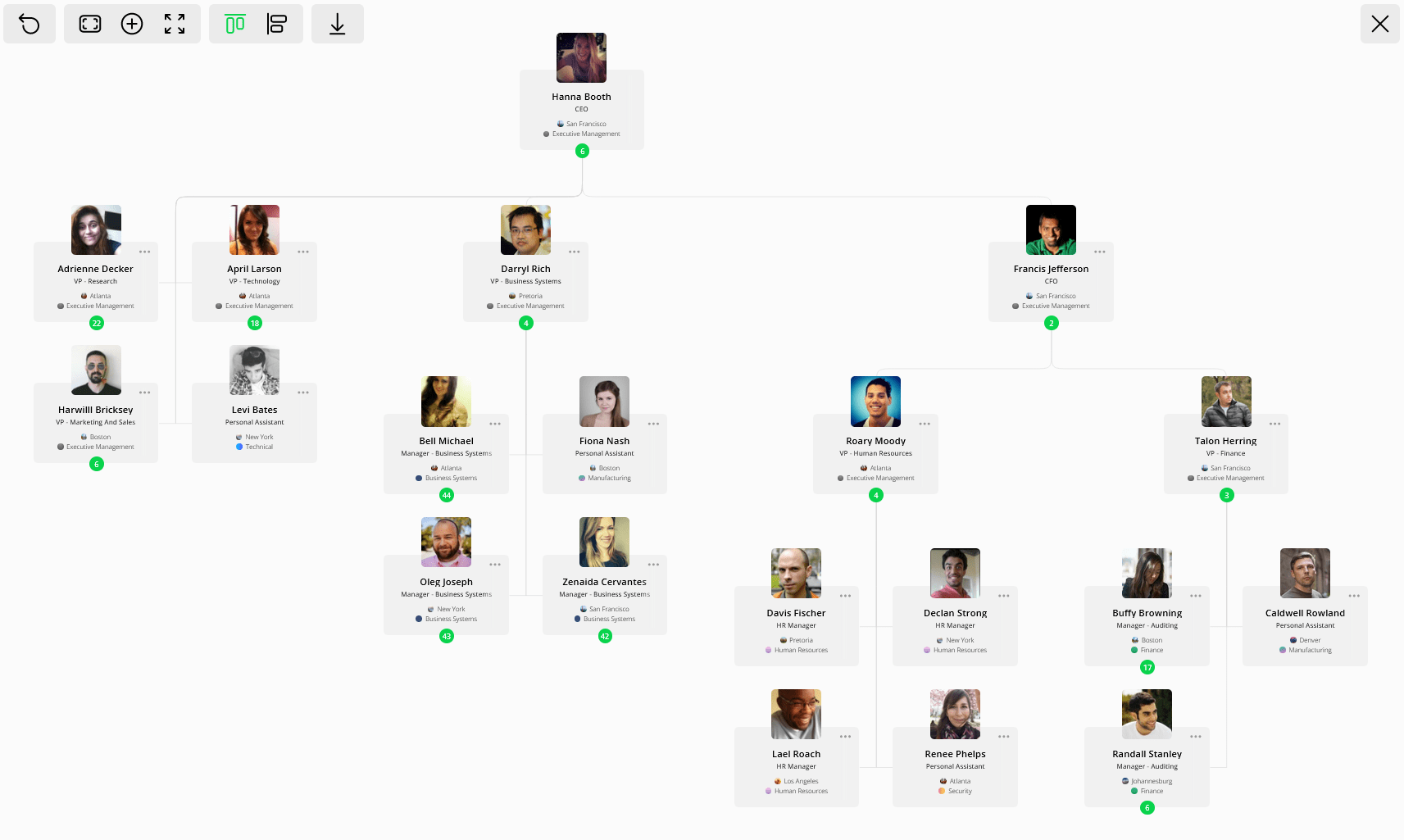
Org chart diagrams themselves are typically created using organizational chart software, also referred to as org chart software. By using a software-based org chart to visualize your chain of command, as opposed to an org chart diagram built manually in a spreadsheet or printed on paper, you are able to do certain things that you otherwise couldn't with a static org chart.
For example, modern org chart tools like OneDirectory allow you to highlight "paths" within your organization's pecking order. This makes it easier to visualize the command structure in more complex organizations where there may be many layers of management.
Choosing different starting points from which to view your chain of command is another useful feature found in modern org chart software tools. This helps you to visualize the command structure within specific offices, departments and teams and is difficult to do with a static org chart diagram.
How to View Your Chain of Command in OneDirectory
Looking for an easy way to visualize and navigate your chain of command? Well, here's how you can do it using OneDirectory.
Quickly see your command line and where you stand in the organization by heading over to your profile (or anyone else's). On the right, you'll see this neat little mini-org chart. It's like a snapshot of your place in the company's pecking order, showing who you report to and who reports to you.

But if you're looking for the full picture, the interactive org chart in OneDirectory is the way to go. You can quickly trace your chain of command by clicking the ellipsis on your org chart card and selecting 'highlight path'. It's like lighting up a path through a forest – it'll show you your command structure to the top of the organization tree.
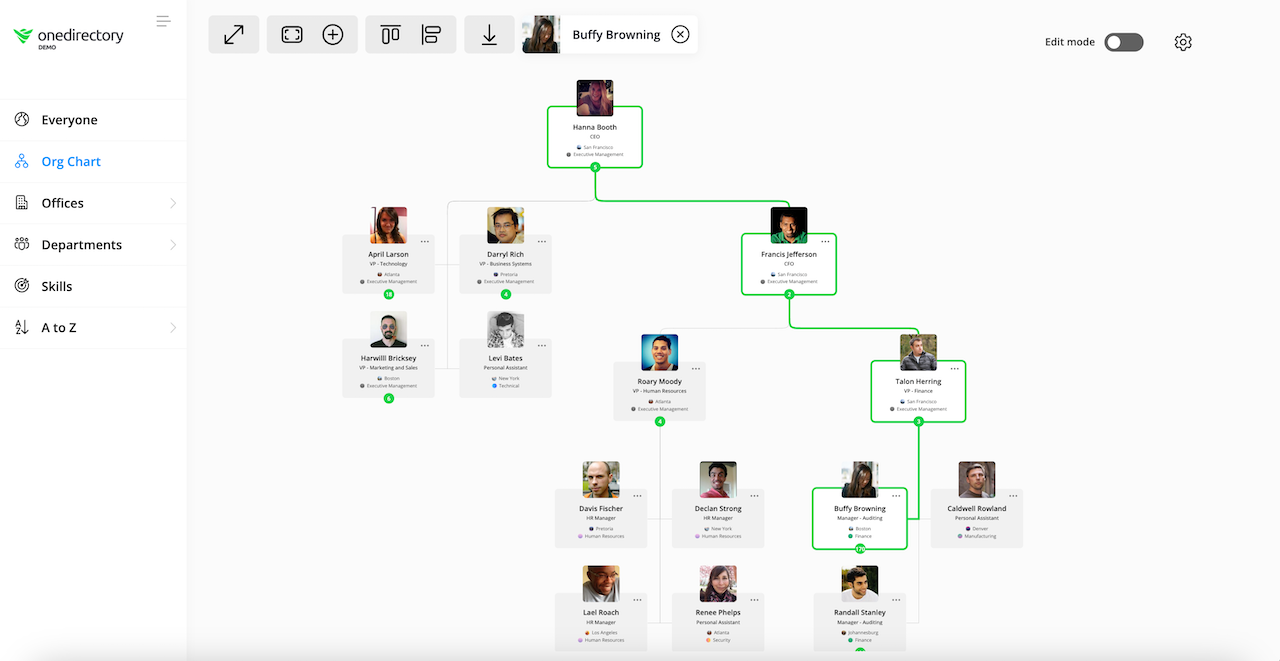
Conclusion
Understanding the corporate chain of command is important for any large organization because it helps keep everyone organized and aligned towards reaching their goals.
Knowing who reports to whom ensures there's no confusion due to overlapping duties between team members, and it creates better communication channels throughout all levels of an organization.
By understanding how the chain of command structure works, you will be able to navigate your corporate environment more easily and stay one step ahead.


